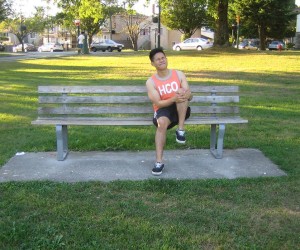It is important to note that walking requires coordinated effort between the muscles and major joints in the body. Once there are issues with the joint such as the hip, the individual can experience pain in another joint as well. Hip pain can change the gait of the individual, thus there is the tendency to develop knee issues that range from limping or using one side of the body while walking.
In case arthritis is responsible for causing the hip pain, it can lead to the development of arthritis in the knees since this condition typically affect these joints. If this is the case, a doctor should be consulted so that proper treatment of the condition can be started to prevent the symptoms from worsening.
Changes in the gait

Hip pain can cause the individual to limp. When limping, there is a change in the knee alignment especially in the patellar area. This will place stress on other parts of the knee. The biggest joint in the body is the knee which carries a burdensome load when walking. Shifting the burden to areas of the knee that do not normally carry a substantial load will strain the knee ligaments by hauling them out of their proper alignment, thus resulting to pain.
What is a slipped capital femoral epiphysis?
Children, specifically boys between 11-15 years old are likely to end up with slipped capital femoral epiphysis which is a distinct type of injury that affects the hip that instigates referred knee pain. The condition causes the ball of the hip joint to detach from the femur. Children going through the rapid growth spurt and those who are obese face the highest risk for developing this condition.
Managing the hip issue
If certain issues involving hip pain affects the knees, it is important to deal with the hip condition first. The knee will not improve until the hip pain stops and the individual can walk normally again. In some cases, the doctor will order some tests in order to assess both the hip and knee if there is no apparent cause of knee pain such as an X-ray, MRI or CT scan.
Treating the knee issue
If the individual limps for some time, he/she might end up damaging the knee ligaments, thus it requires treatment as well. Adequate rest, application of an ice pack, bracing and compression can reduce the damage on the knee. To learn to recognize and manage hip and knee conditions, register for first aid training here. On the other hand, if these treatment options are not effective in dealing with the knee issue, a doctor should be consulted. If the individual develops a limp and knee pain for any reason, it is best to consult a doctor as well so that proper assessment can be carried out.
